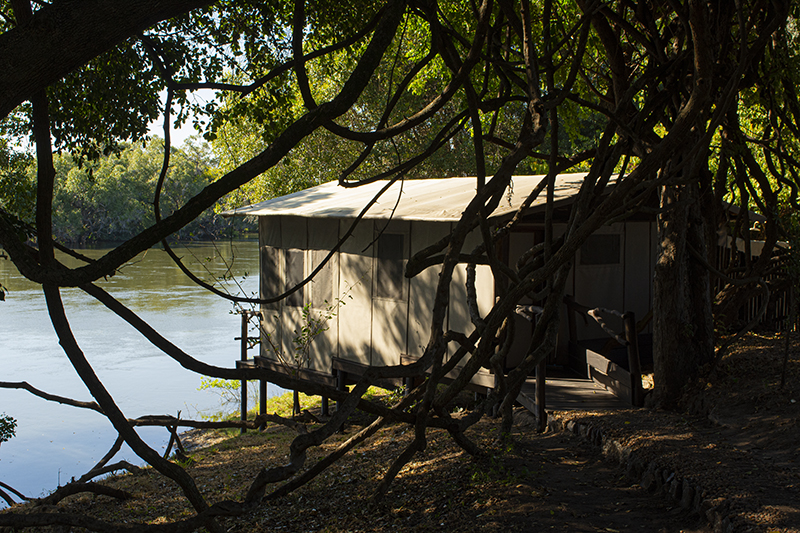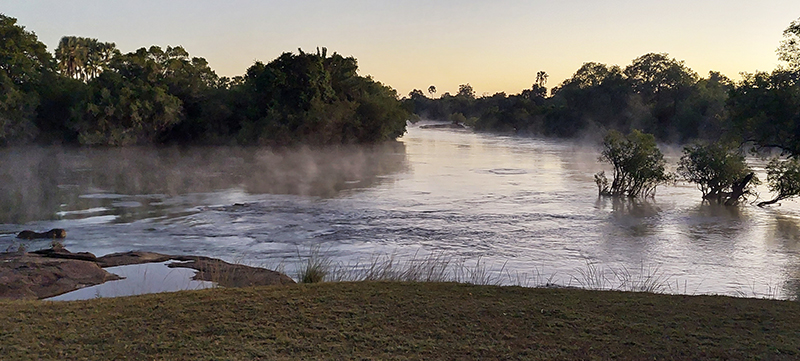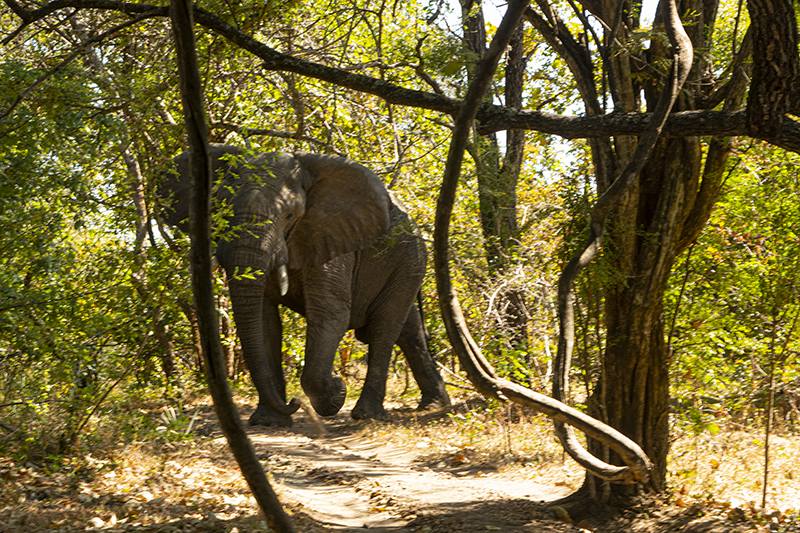One rarely imagines how much is involved in giving a snake training on location. HHiSS was recently contracted to conduct a one-day snake awareness, identification and snakebite first aid training for staff of Kasabushi Lodge and African Parks in the Kafue National park. Contracting had already taken place months ago, as the training was initially planned to take place in February but weather intervened: heavy rains caused flooding in the area and both the lodge and the training venue were inaccessible. However, our National Coordinator already prepared everything. Organising and printing training hand-outs, indemnity forms, test sheets, etc. as well as preparing other materials for show and tell, arranging snakes to bring along for demonstrations.
We mapped our plan; on May 3rd, final preparations were made and the training day was finally set for May 5th. We picked up three snakes from Kalimba reptile Farm in Lusaka and packed all our training materials in the vehicle. On May 4th, we started off, early in the morning to avoid the usual congestion in town one must negotiate to reach the Mumbwa road. On May 5th, the training would be given and on May 6th, the drive back would take place. That was the plan.
The journey to Kasabushi, deep in the Southern Part of the Kafue NP went well. We started off at 06.00 hours and managed to get out of the city before traffic would become bad. At around 08.30 hours, Mumbwa was reached where the fuel tank was topped off. One never knows……a tank full of fuel provides piece of mind. We reached the park entry gate around 09.00 hours and from then on drove slowly over the M9, scanning for wildlife. Unfortunately, apart from several birds, we only spotted a dead Bush Baby (Greater Galago). Clearly road kill, which isn’t surprising. Most vehicles drive well over 100 km/our, where 80 is the speed limit (at night it is 40 and this beautiful animal was obviously killed at night). Birds of note were Schallow’s Turaco, several Bataleurs and a Black-chested Snake Eagle. A couple of kilometres after the bridge over the Kafue river, a left turn led to the entrance of the south-western part of the park. The gate guards were not aware of our arrival (which can be problematic as we were carrying three snakes INTO the National park) but after explaining what we came to do, we were allowed to proceed (it helped that they were wearing African parks insignia on their shirts and we were going to train AP staff!)
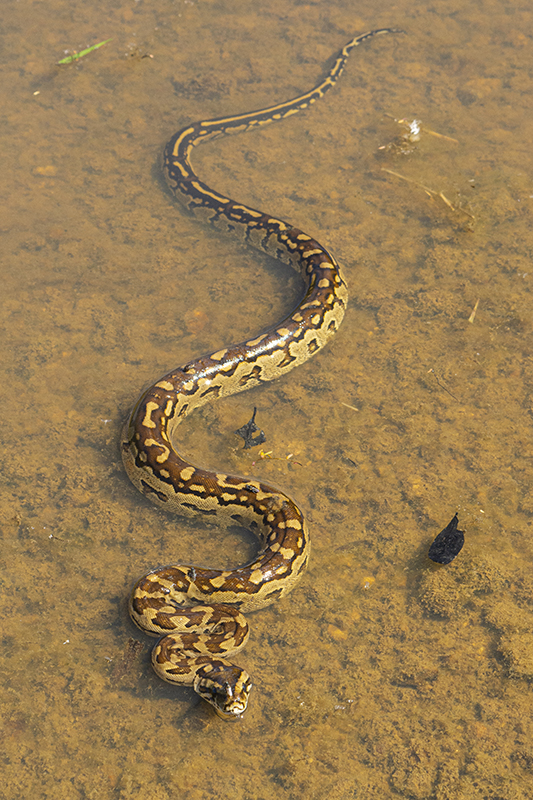
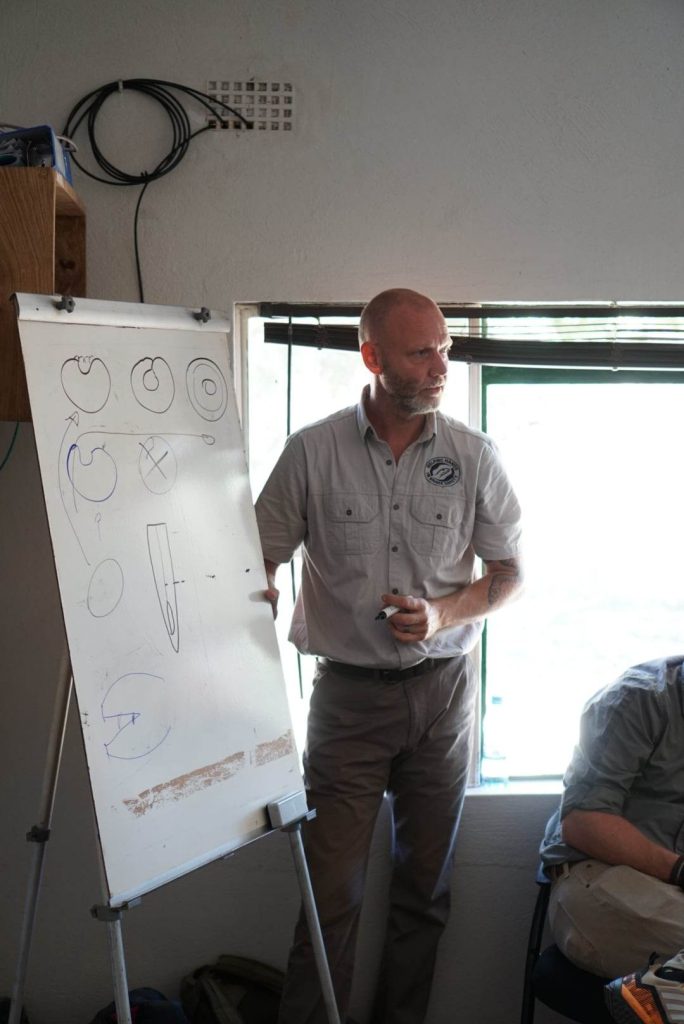
Here we reduced our speed to be able to enjoy the park and hopefully spot some animals. Opening the windows wasn’t really an option for two reasons: dust entering the vehicle and: Tsetse flies! Further along, we passed the turn off to the Chunga camp, where we were to give the training the next day and turned right towards Kasabushi Camp. On our way we stopped on a bridge over a little stream and made a great discovery: a juvenile Python lying in ambush in the water! Despite park rules and the Tsetse flies, we got out to make some photos.
At around 11.00 hours we arrived at Kasabushi, where our priority was to store the snakes in a sheltered environment. After that, a tour of the lodge grounds was given. Kasabushi is a wonderful place which was established about a decade ago and is built with taste. The campsites are private, well shaded and many have a great view of the river. The ablution block is gorgeous (see the impressive photos at the end). The lodge section is equally good. The two chalets are well built and designed, situated on the banks of the river and surrounded by bush. The ‘round house’ is a round, half open building with a beautiful view of the Kafue river and rapids. It has everything one needs to fully relax to the sound of the water flowing.
In the afternoon we met the owners, Quentin and Tessa, who arrived from Lusaka. It was great to meet in person after having only communicated online.
The next day, we drove to the training venue at the Chunga Camp, run by DNPW and African Parks. After setting up, the training started at 09.30 hours. This training attracted more attention than planned and more than the small meeting room could accommodate: 27 people in total joined the training, with one even sitting outside, looking in.
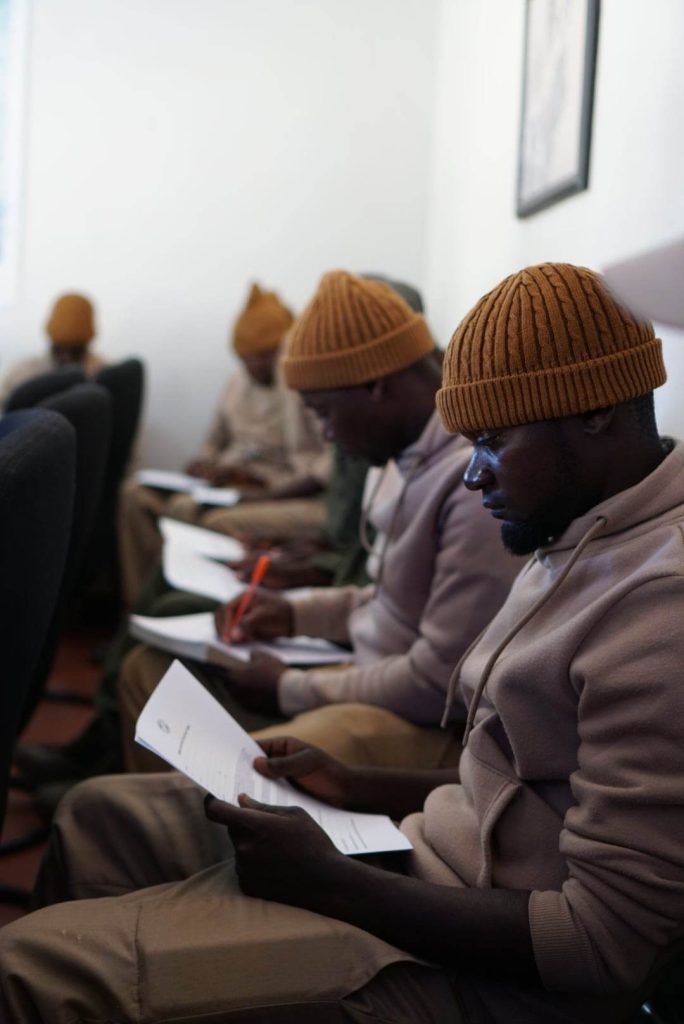
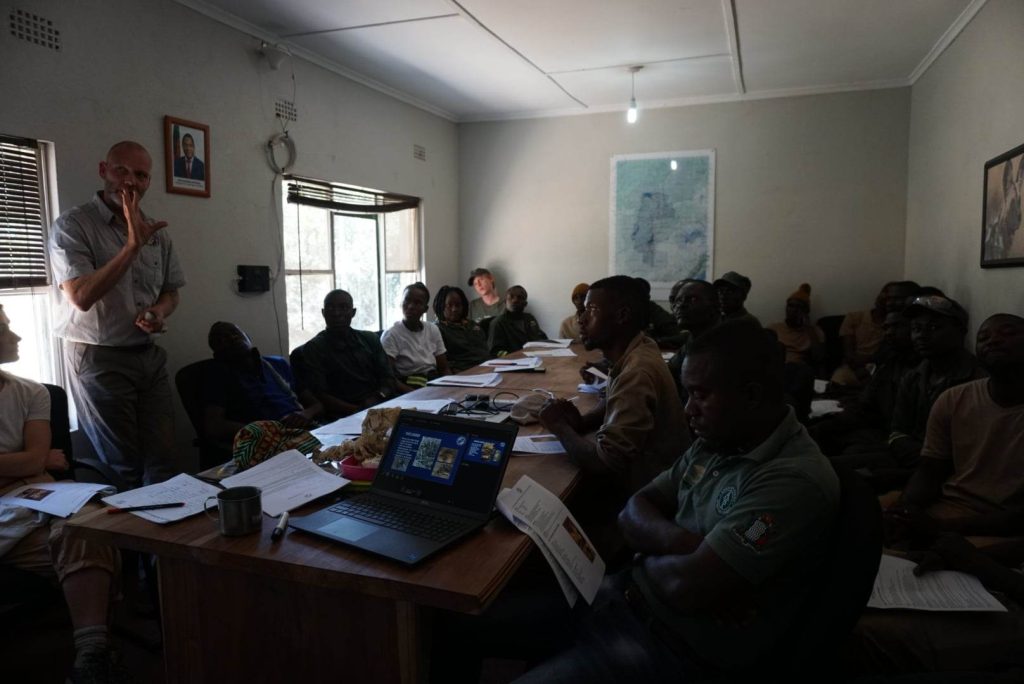
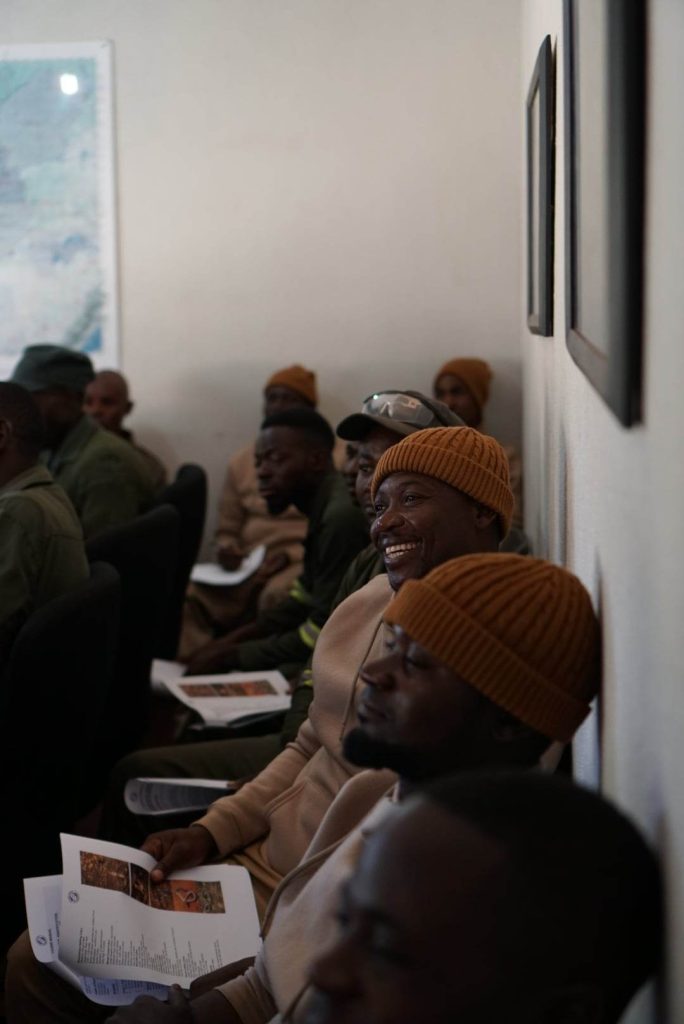
Highlight for many was, of course, the live snake demonstration with a Brown Forest Cobra, a beautifully coloured Puff Adder and a Brown House snake which was held by many of the braver participants for cool photo opportunities. Well after 17.00 hours the training was finished with participants submitting their written tests (we are happy to state that everyone passed the test!).
On arrival back at Kasabushi, in the dark, we met with 4 staff members of DNPW and Africa Parks who came asking for help with a colleague who was bitten by a Python. Although tired from the training, Quentin Smit and the HHiSS National Coordinator jumped into a vehicle and drove to camp deep in the bush where the victim was said to be. After a drive of about 30-40 minutes over bad, recently slashed roads, we arrived at the scene where we found the bite victim. The bite had been on the side of the lower leg and the whole area was tied off with various ‘tourniquets’ made of bark. After having checked for a pulse below the tied area we removed the bark and with the Kasabushi first aid kit, cleaned the various cuts and teeth marks, first with water and then with an alcohol solution. Once done, the wounds were bandaged and the victim handed over to the African Parks vehicle that had arrived on the scene as well and would transport the victim to the nearest clinic for further treatment (if necessary).
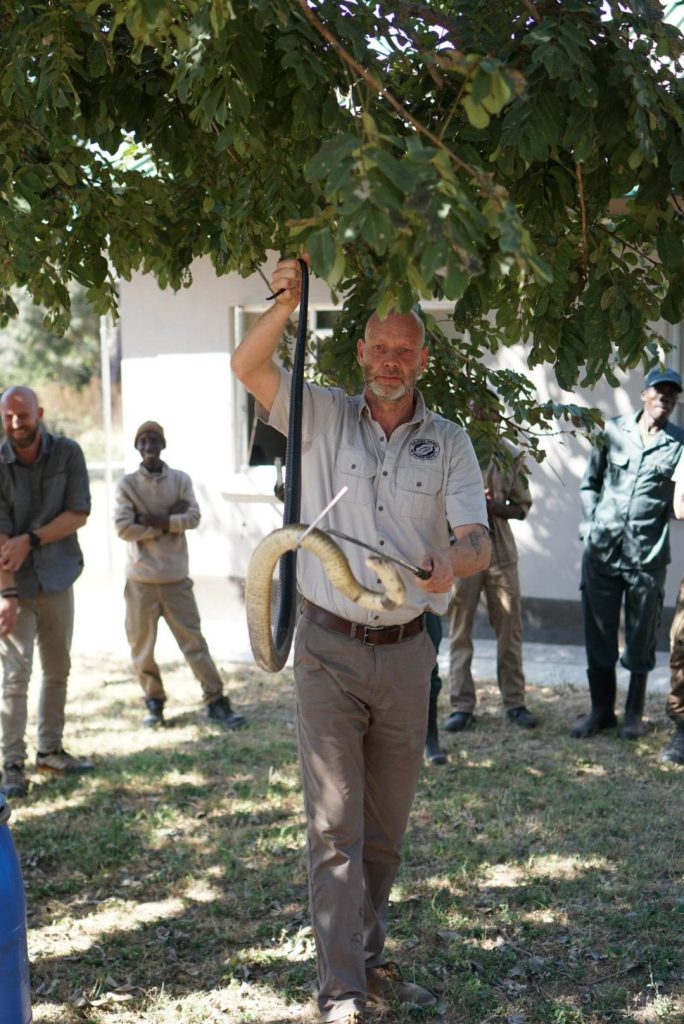

The next day, We set off for our drive back to Lusaka. Taking it easy, driving slowly, to take in as much as possible of the beauty and tranquillity of the national park. About 5 kilometres from the park exit, the engine seized and the car came to a stand-still. This was a problem. In the heat, with three snakes in the back and hardly any cell phone reception. And mind you: with hordes of tsetse flies and wild animals around! We quickly sprung to action, took the drums with snakes out of the vehicle and placed them in the shade under a tree. Then we opened the hood to check what may be the problem, but everything seemed fine. We simply had to wait for network to improve or a vehicle to pass by. After about 40 minutes we finally managed to get through to the operations manager of African parks who promptly promised to send a mechanic. It took less than 40 minutes for the mechanic to arrive and start working on the vehicle. Another 30 minutes later and we were back on the road! The mechanic and his colleague even followed our vehicle for about 10 kilometres to ensure the car was really working properly.
We arrived back in Lusaka around 18.00 hours (instead of the planned 15.00 hours). But: we made it. The next day, all that remained was to return the snakes to Kalimba Reptile park.

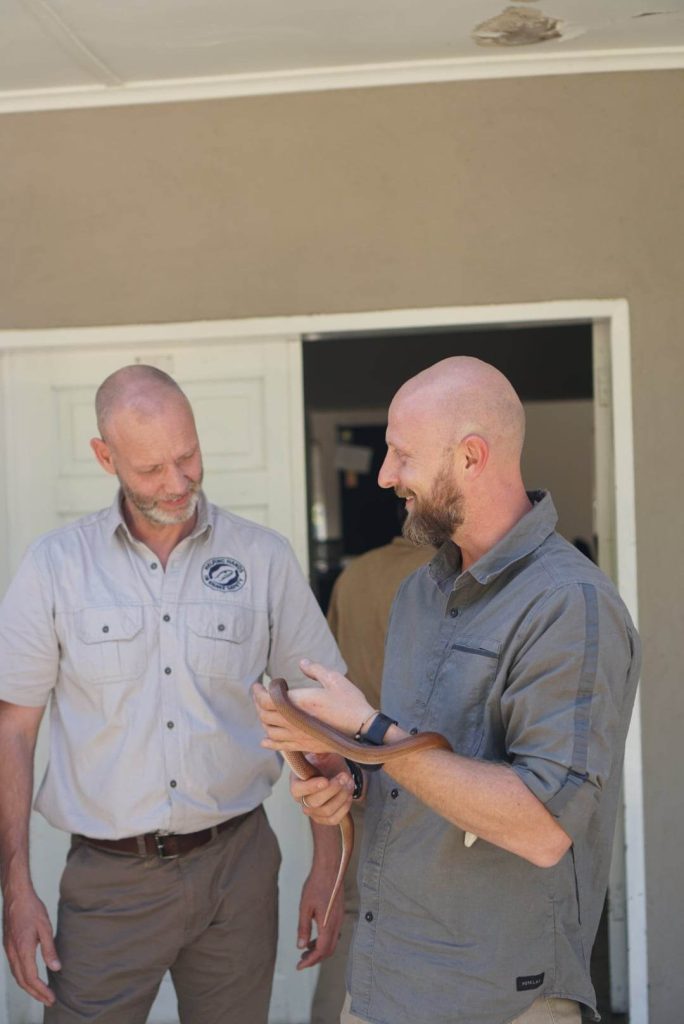
We would like to thank African Parks for accommodating the training at their camp. We especially thank the African Parks operations manager and mechanic for helping us out of a break-down pickle. As always, we thank Kalimba Reptile park for again lending us their snakes, which allows us to provide training participants a lasting impression of their training. Finally, we’d like to thank Quentin, Tessa and their fantastic staff at Kasabush Camp for organising the training, involving African Parks and for their very generous hospitality at their amazing place. The pictures below do not do the place justice!


